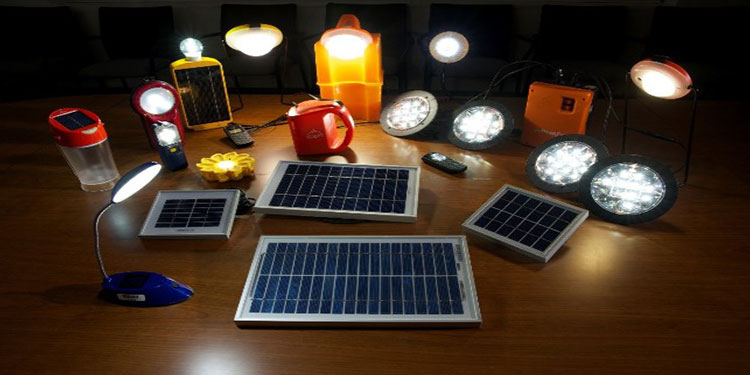
LEDs have replaced fluorescent tubes, induction lights and incandescent lights because they require less power, according to ZRW Mechanika MD Dr Kamalluddien Parker.
Combining LED lights with solar power as a source of energy to store in batteries allows consumers to gain long-lasting hours of illumination at night from the electricity generated by the solar panel during the day, he says.
As a result, ZRW Mechanika successfully paired its LED lighting solutions with solar power to create its “SIYAKHANYISA” portable solar systems, whose name means “Let there be ‘light!” in Xhosa.
The solar lighting kits come with a 30 W amorphous durable solar panel, a PWM solar charge controller and four to six weatherproof LED lights for indoor and outdoor use.
It also provides radio power and has a USB connection for charging smartphones or personal computers from a 6 V or 12 V DC supply. The kits includes switches, cabling and light fittings for LED bulbs.
Parker says that the solar panels are “tough” with rubber casings to prevent breakage and discreet brackets for secure attachment.
Once completely charged, the system will produce up to 12 hours of illumination, with an additional three days of backup power in case of gloomy weather.
ZRW Mechanika began designing, developing and prototyping the solution in 2011, and has collaborated with an international partner to put together “over thousands” of these kits in Southern Africa, with applications in Category C housing, such as informal housing areas, rural electrification and more.
“With the deployment of this solution in local municipalities ZRW Mechanika has created thousands of community and youth jobs and opportunities, including by providing training for small-scale installers of these solutions,” Parker elaborates.
He adds that the installations have been successful in giving basic illumination to less developed regions, allowing people to charge their phones and as a result, have access to health, safety and law enforcement services.
As a result, the approach has improved quality of life while also reducing the usage of poisonous and flammable fuel, hence lowering the risk of fire.
Another significant advancement in the design and implementation of solar electricity with LED technology is the ZRW solar combined lighting solutions, which are employed in street lighting and high-mast applications.
This method offers region lighting as a substitute to traditional high masts that use grid electricity and high-pressure sodium or mercury vapour lights.
Parker touts that by utilising ZRW’s revolutionary design, the solar integrated light towers provide “a clean, sustainable, functional high-mast lighting” to aid boost area safety and security, without the need for grid power or wiring.
Furthermore, the system is less vulnerable to cable theft and can be deployed 90 percent faster than traditional high towers.
Parker believes that this technology should become the standard for installing high-mast lighting in high-risk or high-density communities, particularly because it can allow speedier service delivery while being sustainable.
He claims that it can boost local engineering activity in the steel and electrical sectors while considerably decreasing the impact of wire breakage and theft.
Furthermore, he observes that the solar high towers are combined with other surveillance and monitoring technology such as weather stations and cameras to make cities smarter and more sustainable.
He advised Engineering News that “one of the things you must understand is that our solar high towers have enhanced safety and security in general because where there is light, there is an increased sense of safety [owing] to visibility and early warning detection” .
He says that in South Africa, there are significant issues associated with areas with unlit streetlights caused by theft or vandalism of cables, luminaires and light bulb metal casings.
He adds that this is an opportunity to greatly minimise these issues while improving living conditions, creating jobs and starting new businesses. It is also a solution that can be taken to other African countries.
Parker believes that these innovative solutions can be part of a larger plan for smarter and more sustainable cities that “promote local skills, local jobs and local engineering innovation and concludes that “hopefully, these solar solutions can be deployed in large numbers to improve the living and environmental conditions of our citizenry.”
